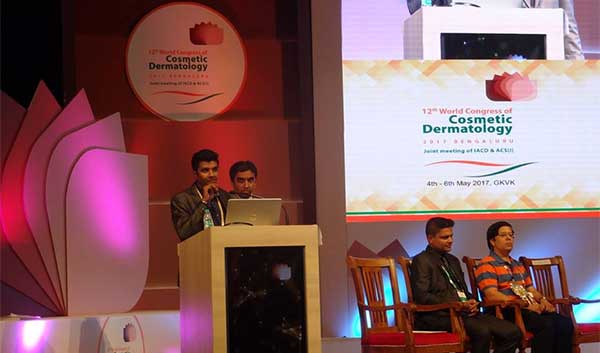HEREDITARY BALDNESS TREATMENT IN BANGALORE
Due to high demand, I’m experiencing issues briefly. Please try again later or use the All tab to get an answer in the meantime.
Hereditary Baldness: The Root of the Problem
Hereditary baldness, also known as androgenetic alopecia, is the most common cause of hair loss. It is caused by a combination of genetic and hormonal factors and is usually passed down from one or both parents. The main cause of hereditary baldness is a hormone called dihydrotestosterone (DHT). DHT binds to the hair follicles and causes them to shrink, resulting in thinner and shorter hairs. Eventually, the follicles will stop producing hair altogether, resulting in baldness. Treatment for hereditary baldness often involves medications that block the effects of DHT, as well as topical treatments such as minoxidil. Hair transplants may also be used to restore hair in areas where baldness has occurred.
Hereditary Baldness classification for men
It is most commonly classified into 4 types. The first is male pattern baldness, also known as androgenic alopecia. This is the most common and is what most of these medications, such as Proscar and rogaine are designed for. The second type is known as female pattern baldness. The third is alopecia areata, which is caused by an autoimmune response. The fourth is known as diffuse alopecia, which is unknown in a cause.
Hereditary Baldness classification for women
There are only two types of female pattern baldness. The first is the female type of androgenic alopecia, which is similar to male pattern baldness. It is much less common because testosterone is a requirement for this, and women have a much lower testosterone level. The other type is alopecia areata, which is the auto-immune type. It affects both men and women.
Know more about Hair Transplant in Bangalore.
- Hair Transplant in Bangalore
- Hair Transplantation For Women In Bangalore
- Body Hair Transplantation In Bangalore
- Vertex Crown Hair Transplant In Bangalore
- Medical Treatment Of Hair Loss In Bangalore
- Beard Moustache Hair Transplantation In Bangalore
- Repair Of Failed Hair Transplant In Bangalore
- Hair Loss Causes And Solution in Bangalore
- Platelet Rich Plasma hair treatment in Bangalore
FAQs
________________________________________
Q1: What is hereditary baldness, and how common is it?
Hereditary baldness, also known as androgenetic alopecia, is a genetic condition that causes hair loss in both men and women. It’s the most common type of hair loss, affecting nearly 50% of men and women by the age of 50.
________________________________________
Q2: Can hereditary baldness be reversed?
While hereditary baldness cannot be completely reversed, certain treatments can slow its progression and, in some cases, stimulate regrowth. Treatments like PRP therapy, Minoxidil, Finasteride, and hair transplant surgeries offered at clinics like Vitals Klinic can effectively manage hair loss.
________________________________________
Q3: What are the common treatments for hereditary baldness?
Treatments for hereditary baldness include:
• Medications: Such as Minoxidil and Finasteride.
• Platelet-Rich Plasma (PRP) Therapy: Stimulates growth by using platelets from your own blood.
• Low-Level Laser Therapy (LLLT): Uses laser light to improve hair density.
• Hair Transplant Surgery: FUT and FUE techniques for permanent hair restoration.
________________________________________
Q4: Is PRP therapy for hair loss safe, and how effective is it?
PRP therapy is considered safe, as it uses your blood’s platelets to stimulate hair follicles. It’s shown to be effective for many individuals, especially when combined with other treatments. Vitals Klinic offers PRP therapy under the supervision of trained specialists to ensure optimal results.
________________________________________
Q5: How does a hair transplant work, and is it a permanent solution?
Hair transplants involve moving healthy hair follicles from denser areas of the scalp to bald or thinning areas. This can be done through FUT or FUE methods. The transplanted hair follicles continue to grow in their new location, making hair transplants a permanent solution for hereditary baldness.
________________________________________
Q6: Are there any side effects of using Minoxidil or Finasteride?
Minoxidil and Finasteride are generally safe when used as directed, but they may cause mild side effects like scalp irritation (Minoxidil) or reduced libido (Finasteride). It’s important to consult a specialist at Vitals Klinic to determine the right dosage and treatment plan.
________________________________________
Q7: How long does it take to see results from hereditary baldness treatments?
The time to see results varies depending on the treatment. For instance:
• Medications: Typically show results within 4–6 months.
• PRP Therapy: Improvement can be seen in 3–6 months.
• Hair Transplant Surgery: New hair growth usually starts within 3–4 months, with full results in 9–12 months.
________________________________________
Q8: How can I book a consultation for hereditary baldness treatment in Bangalore?
You can book a consultation with hair restoration specialists at Vitals Klinic by visiting their website or calling their clinic in Bangalore. They offer personalized assessments to recommend the most effective treatment based on your hair loss stage and individual needs.
________________________________________
